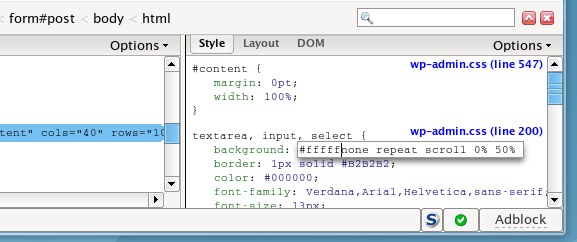Up until a couple of days ago I still hadn’t tried out Windows Vista Release Candidate 1 which I downloaded a long time ago. Unfortunately, I discovered that the ethernet driver for VMware doesn’t work (and it used to in Beta 2), and so I was forced to wait until a convenient moment to install it on a physical machine (which wasn’t going to be my main desktop, funnily enough).
Windows Vista’s installer is still pathetically fussy about where it will allow you to install Vista. It requires installation to the first primary partition on a hard drive which is master.
Well, that’s really convenient, considering that my partition layout on the first hard drive on this machine was as follows:
Disk /dev/hda: 40.0 GB, 40060403712 bytes
255 heads, 63 sectors/track, 4870 cylinders
Units = cylinders of 16065 * 512 = 8225280 bytes
Device Boot Start End Blocks Id System
/dev/hda1 * 1 1912 15358108+ 83 Linux
/dev/hda2 1913 1988 610470 82 Linux swap
/dev/hda4 3009 4870 14956515 f W95 Ext'd (LBA)
/dev/hda5 4054 4870 6562521 83 Linux
/dev/hda6 3009 4053 8393899+ 83 Linux
hda1 was my CentOS server installation, hda5 was a few gigs of data left over from somewhere else, and hda6 was my Ubuntu Dapper installation. Of course, the Windows install required the monopoly on hda1, which currently was occupied.
Well, thank goodness for the flexibility of Linux. I simply used the low level tool dd to make images of all the partitions (onto a spare 160 GB drive also in that machine), and then wiped off the disk.
One Vista install later, and the drive now had just one primary partition of rougly 17 GB with Vista on it.
I then created a partition to match the size of the CentOS install, and dd‘d the image back. After tweaking a few configuration files via the Ubuntu Live distro, I then rebooted with my GRUB bootloader CD in the drive, typed in the boot commands and CentOS booted like nothing had happened. 🙂
I then reinstalled GRUB to the hard drive (with a boot menu obviously, I don’t type boot commands every boot!) and added Vista to the list of OSs to boot.
The Ubuntu Dapper partition unfortunately would no longer fit (by about 2 GB), as Vista is now using a lot of the space, but instead I installed Edgy, and I’ll recover the important files off Dapper when I need them.
So after about half a day of partition shuffling, it now looks like:
Disk /dev/hda: 40.0 GB, 40060403712 bytes
255 heads, 63 sectors/track, 4870 cylinders
Units = cylinders of 16065 * 512 = 8225280 bytes
Device Boot Start End Blocks Id System
/dev/hda1 * 1 2040 16384000 7 HPFS/NTFS
/dev/hda2 2040 4870 22733220 5 Extended
/dev/hda5 2040 3952 15359384+ 83 Linux
/dev/hda6 3953 3985 265041 82 Linux swap
/dev/hda7 3986 4870 7108731 83 Linux
hda1 is now Vista (NTFS), hda5 is CentOS, hda6 is Linux swap (for both) and hda7 is Ubuntu Edgy Eft.
The things I do to test Vista…






